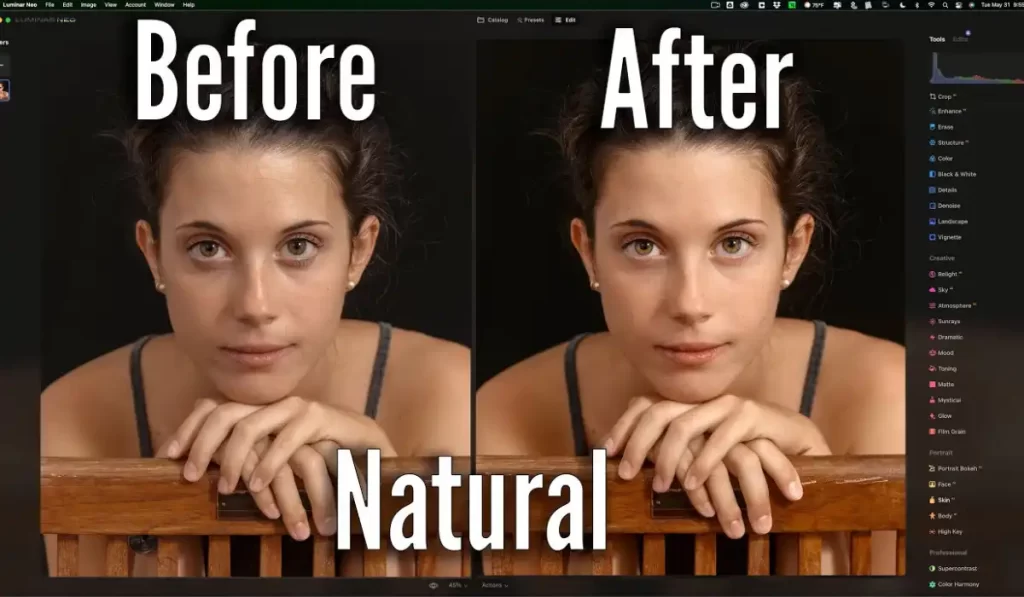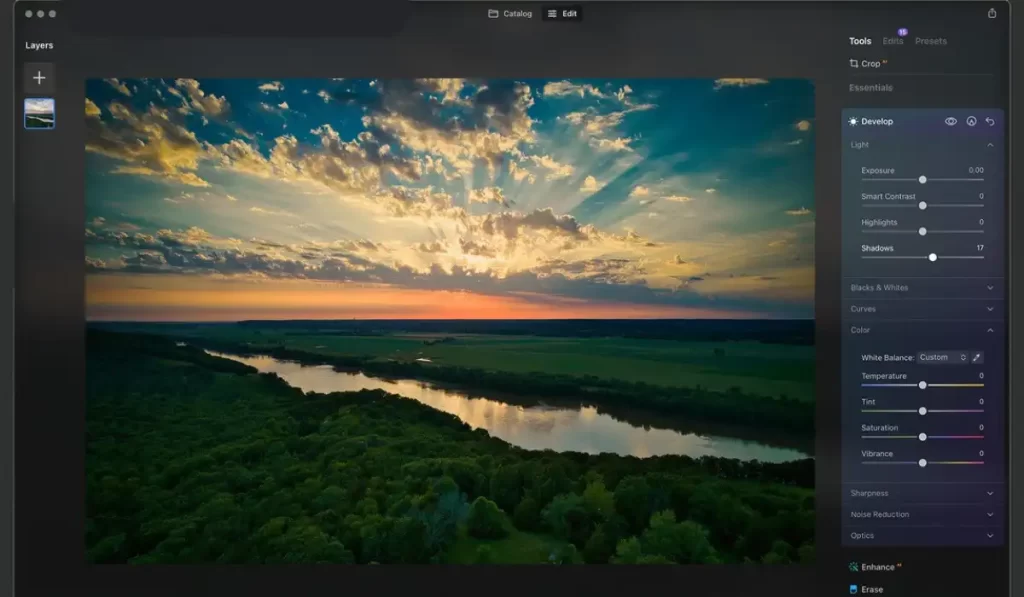How to make a background transparent in Photoshop?
This method will help your designs pop out whether you’re changing photos of products or making eye-catching marketing graphics. With Photoshop’s strong tools, it’s easy to get rid of any background, leaving only the subject.
Table of Contents
How Do I Make an Image Background Transparent in Photoshop?
This is a list of tools and methods you can use to remove the background from a picture in Photoshop. These tools give you different levels of control and accuracy based on how complicated your subject and background are.
Using Selection Tools
- Magic Wand Tool
- Quick Selection Tool
- Lasso Tools (Lasso, Polygonal Lasso, Magnetic Lasso)
Using Layer Masks for Non-Destructive Editing
- Layer Mask Tool
- Brush Tool (for refining masks)
- Select and Mask
Using Background Eraser Tool
- Background Eraser Tool
- Eraser Tool
Using Color Range Selection for Complex Backgrounds
- Select > Color Range
- Adjusting Fuzziness and Range
Using the Pen Tool for Precise Selections
- Pen Tool (Paths mode)
- Convert Path to Selection
Refining Edges After Selection
- Select and Mask
- Refine Edge Brush Tool
- Feathering and Contrast Settings
Auto Remove Background Feature
- Remove Background Button (in the Properties panel for newer Photoshop versions)
Cut out image media have all these services. Just knock us and we will discuss as your needs. Photoshop make background transparent easily by using the Magic Wand Tool or the Quick Selection Tool to isolate the area you want to keep.
How to Change Background in Photoshop 2024 with AI
Through Adobe Firefly, Photoshop 2024 adds powerful AI tools that make changing the background easier than ever. So that the background changes without a hitch, do these things:

What to Do
- Open the Picture: Open up Photoshop and drag the picture you want to change into it.
- Choose Subject on Its Own: Let AI figure out what the main subject is by going to Select > Subject.
- Make the Choice Better: To clean up the edges, use the Select and Mask tool and change the settings for brush size and edge recognition.
- Once the subject is chosen, go to the Layers panel and click on Remove Background.
- Change Background: In Photoshop, drag the new background picture in.
- Put this image layer below the layer that contains the subject.
- Change and Mix: To make the subject and background mix smoothly, use tools like Brightness/Contrast or Colour Balance.
- Send the final picture: When you’re done, go to File > Export As and save the picture in the format you want.
Pros and Cons of Using Photoshop for Background Edits
| Pros | Cons |
| Advanced AI tools like Firefly simplify editing | The steep learning curve for beginners |
| Complete control over edits with layers | Requires subscription |
| Seamless integration with other Adobe tools | Maybe resource-intensive on older machines |
Other AI Tools for Background Changes
You can change the background with a number of AI-powered tools, such as
- Remove.bg: Removes images automatically and for free with little feedback from the user.
- Canva AI Background Remover: Easy to use and good for making small changes. Often used for social media images.
- Luminar Neo: It has powerful AI-based tools, but it’s not as precise as Photoshop in complicated situations.
Comparison Between Photoshop vs Other AI Tools
| Feature | Photoshop 2024 | Remove.bg | Canva AI | Luminar Neo |
| Accuracy | Highly accurate, complex edge handling | Decent for simple subjects | Good for social media | Advanced AI, but needs fine-tuning |
| Editing Control | Full control over layers and blending | Minimal control | Limited control | Decent but less flexible |
| Integration | Part of Adobe Suite works with other apps | Standalone | Part of the Canva suite | Standalone software |
Transparent Background in Photoshop Using Layer Masks or Selection Tools
Layer masks or the selection tool are often used in Photoshop to make a background that is see-through. An image masking service is essential for isolating complex elements like hair or transparent objects for seamless background removal. For each method, here are the steps:

Using Layer Masks
Layer masking lets you change without destroying the original, which makes it a useful tool for making things transparent. To learn Photoshop how to make a transparent background, you can follow a simple process like Layer Mask to precisely remove unwanted areas.
What to Do
- Open Your Picture: Start Photoshop and add the picture you want to use.
- Choose a Subject or Area: To let AI find the main item, go to Select > Subject.
- Make the Choice Better: To be sure of your work, click Select and Mask and change how smooth the edges are.
- Put on a Layer Mask: Press the Layer Mask button near the bottom of the Layers window. The place that wasn’t chosen will become clear.
- Make the Mask look better: To show or hide parts of the picture, use the brush tool on the mask.
- To save the picture with transparency: To keep the clear background, save the picture as a PNG by going to picture > Export As.
Pros and Cons of Layer Masks
| Pros | Cons |
| Non-destructive editing preserves the original image | Requires more time and precision |
| Easy to adjust and modify later | The learning curve for beginners |
| Works well for complex objects | May need additional refinement tools |
Using Selection Tools
When the background is simple, selection tools like the Magic Wand or Quick Selection tool work faster. Photoshop has creative tools to turn a portrait into line art by using filters like the Poster Edge or the Pen Tool.
What to Do
- Open the Picture: Bring the picture into Photoshop.
- Pick out a Selection Tool: For backgrounds that are all one color, use the Magic Wand Tool. For more details on items, use the Quick Selection Tool.
- Clean up the edges: To make the lines smoother, change the pick by going to Select > Modify > Expand or Feather.
- Take away the background: To make the background see-through, flip the pick and press Delete.
- Send the Picture: Save it as a PNG file to keep the see-through look.
Pros and Cons of Selection Tools
| Pros | Cons |
| Fast and easy for simple backgrounds | Limited precision for detailed images |
| Great for solid color backgrounds | This can result in jagged edges without refinement |
| Useful for quick edits | Less flexible compared to layer masks |
Create Transparent Background in Photoshop Using Color Range Selection or Background Eraser Tool

The Colour Range Selection Tool and the Background Eraser Tool are two useful tools in Photoshop for making backgrounds that are see-through. Here are step-by-step instructions for both, along with what’s good and bad about each.
Using Color Range Selection
What to Do
- Open Your Picture: Open Photoshop and add the picture.
- Pick a Colour Range: From the menu at the top, choose Select > Colour Range. Click on the background color you want to get rid of with the Eyedropper tool.
- Change the Fuzziness: You can fine-tune the pick by moving the Fuzziness tool.
- Make the Choice Better: If you didn’t fully pick the background, press Shift and click on other parts of it. You can smooth or feather lines with Select and Mask as needed.
- Get rid of the background: To get rid of the background, press the Delete key.
- Send to: To keep the transparency, save the picture as a PNG.
Pros and Cons of Color Range Selection
| Pros | Cons |
| Fast and effective for images with solid or similar colors | Struggles with complex or multicolor backgrounds |
| Provides control over the degree of selection | May require multiple refinements for accuracy |
| Easy to use for beginners | Limited performance on images with subtle transitions |
Using the Background Eraser Tool
What to Do
- Open Your Picture: Put your picture into Photoshop.
- Choose the Background Eraser Tool: You can press E or pick it from the menu on the left. If you right-click, you can change the brush’s size and strength.
- Choose the sampling option: Pick Once for a single color choice or Continuous for dynamic sampling.
- Change the Tolerance: For harsher wiping, use a higher tolerance (30–50%)apx. With a lower range (10–20%)apx, you can control edges more precisely.
- Erase the Background: Click and drag the brush along the sides to start removing the background.
- Fix the edges: Make sure you zoom in to get rid of all the background elements that aren’t part of the subject.
- Save the file: To keep the clear background, save the picture as a PNG.
Pros and Cons of Background Eraser Tool
| Pros | Cons |
| Ideal for backgrounds with varying colors and patterns | Requires a steady hand and patience |
| Works well for subjects with fine details (e.g. hair) | Risk of erasing part of the subject by mistake |
| Offers high control over edge refinement | Can be time-consuming for large images |
Photoshop Make Background Transparent Using Refining Edges or Pen Tool
Here are step-by-step instructions on how to use the Refine Edge Tool and the Pen Tool to make a background see-through in Photoshop. To underline text in Photoshop, select the Text Tool, click the underline button in the Character panel, or use shortcut settings to apply this effect efficiently.
Using Refine Edge Tool
Edges like those in hair, fur or smoke, work great with this method. When you save your work in a PNG format, Photoshop creates an image with Photoshop no background for transparency and a clean professional look.
What to Do
- Open the Picture: Put your picture into Photoshop.
- Pick something: Pick out something quickly or go to Select > Subject.
- Choose More Carefully: To make the pick a little bigger, go to Select > Modify > Expand. Next, to make the edges of the pick smoother, click Select > Modify > Feather.
- Start up the Refine Edge Panel: To get to the panel, press Ctrl+Alt+R on a Windows computer or Cmd+Option+R on a Mac.
- Change the Edge: Edge Detection can help you narrow down the choices. To get the look you want, move the Smooth, Feather and Contrast sliders. For better control over hair or sensitive areas, use the Refine Radius Brush.
- Send the choice out: From the Output menu, pick New Layer with Layer Mask.
- Remove Background: Turn off or get rid of the original background layer.
- Save the Picture: To keep the transparency, save it as a PNG file.
Pros and Cons of Refine Edge Tool
| Pros | Cons |
| Great for complex edges like hair and fur | Requires practice for optimal results |
| Allows real-time adjustments | May struggle with extremely fine details |
| Smooth and feather options for natural blends | Some artifacts might remain on complex edges |
Using Pen Tool
Because it gives you exact control, the Pen Tool is great for working with things that have sharp edges. By using the Pen Tool, you can Make a background transparent in Photoshop for better accuracy in complex subjects.
Learn how to turn portrait into line art.
What to Do
- Open the Picture: Open Photoshop and add the picture.
- Start the Pen Tool: Pick up the Pen Tool (P key) from the list of tools.
- Make a Path: To make anchor points, click along the edge of your picture. Drag the handles to change the curves.
- Get out of the way: Join the last anchor point to the first one to finish the pick.
- Change the path to a selection: Make a choice when you right-click.
- Optional: Refine Your Choice: If you need to, use the Select > Modify tools. To get rid of the background, add a Layer Mask and turn it off or delete it.
- Send the Picture: To keep the transparency, save as a PNG file.
Pros and Cons of Pen Tool
| Pros | Cons |
| Excellent for hard edges and geometric shapes | Time-consuming for detailed work |
| Precise control over every anchor point | Requires proficiency with the tool |
| Ideal for professional, clean cutouts | Less effective for objects with soft edges |

At The End
By learning how to make a background visible in Photoshop, you can be more creative and make images that look like they were made by a professional.
With its strong selection and marking tools, you can easily get the finish you want by fine-tuning every detail. Photoshop makes the process smoother so that you can get your work done quickly, whether you’re photographing products or working on personal projects.
FAQs
What’s the difference between the Magic Wand Tool and the Quick Selection Tool?
Because it picks out areas with similar colors, the Magic Wand Tool is great for making big backgrounds that are all the same color. The Quick Selection Tool, on the other hand, works like a brush, identifying the edges of objects as you drag, giving you more control over making complex choices. Together, these two tools make getting rid of the background faster and more accurate.
Can I make only a portion of the background transparent in Photoshop?
Of course. You can separate parts of the background and make them see-through with selection tools or layer masks. Because of this, you can mix some parts of the background with the subject to make creative effects or see through some of it.
What is a layer mask, and how does it help in making backgrounds transparent?
With a layer mask, you can change a picture without deleting it completely by showing or hiding parts of it. It’s an important tool for making images see-through because it lets you choose which parts stay visible and which ones go clear.
How can I refine the edges after making a selection for transparency?
“Select and Mask” is an option in Photoshop that lets you change the contrast of the outer edges or make them smoother or softer. Tools like the Refine Edge Brush make it easier to make choices around tough spots like hair or fur, so the edges look smooth and natural.

